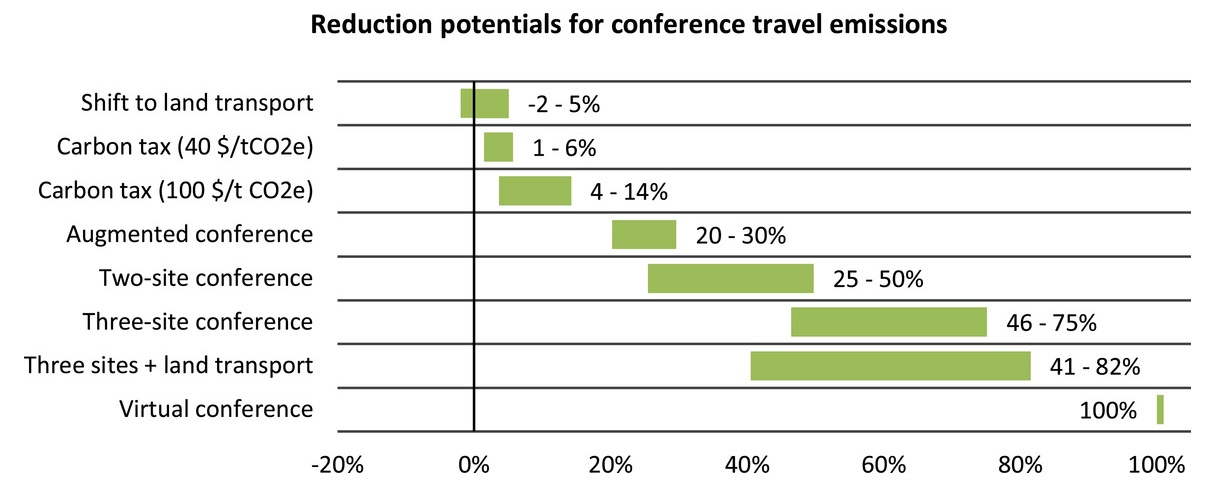Emission reduction potentials for academic conference travel

The Journal of Industrial Ecology published our study on the potential for reducing conference travel emissions. We studied the effect of a shift to land transport, a carbon tax, exclusion of long‐distance flyers, multi‐site conferencing, and a virtual conference. Here’s what we found:
- The greatest emission reduction is achieved by a fully virtual conference, which would require no travel at all.
- A multi-site conference can also greatly reduce emissions because it cuts out long flights and allows more people to take land transport.
- A two-site conference reduces emissions by 25–50%; a three‐site conference by 46–75% or up to 82% when combined with a shift to land transport.
- Reductions of 20-30% can be achieved through an augmented conference that allows attendees living furthest to attend virtually.
- Only a modest reduction is achieved when attendees of a conventional conference shift to land transport or pay a carbon tax of up to 100$/t CO2e.
Both the augmented conference and the carbon tax put an uneven burden on attendees, with student attendees and those having to travel furthest being worst off.
When virtual conferencing is not feasible or undesirable, we recommend multi‐site conferences because they achieve a large reduction in emissions, fairly distribute costs and benefits, and maintain a substantial amount of in-person contact.
You can read the full article here with open access.